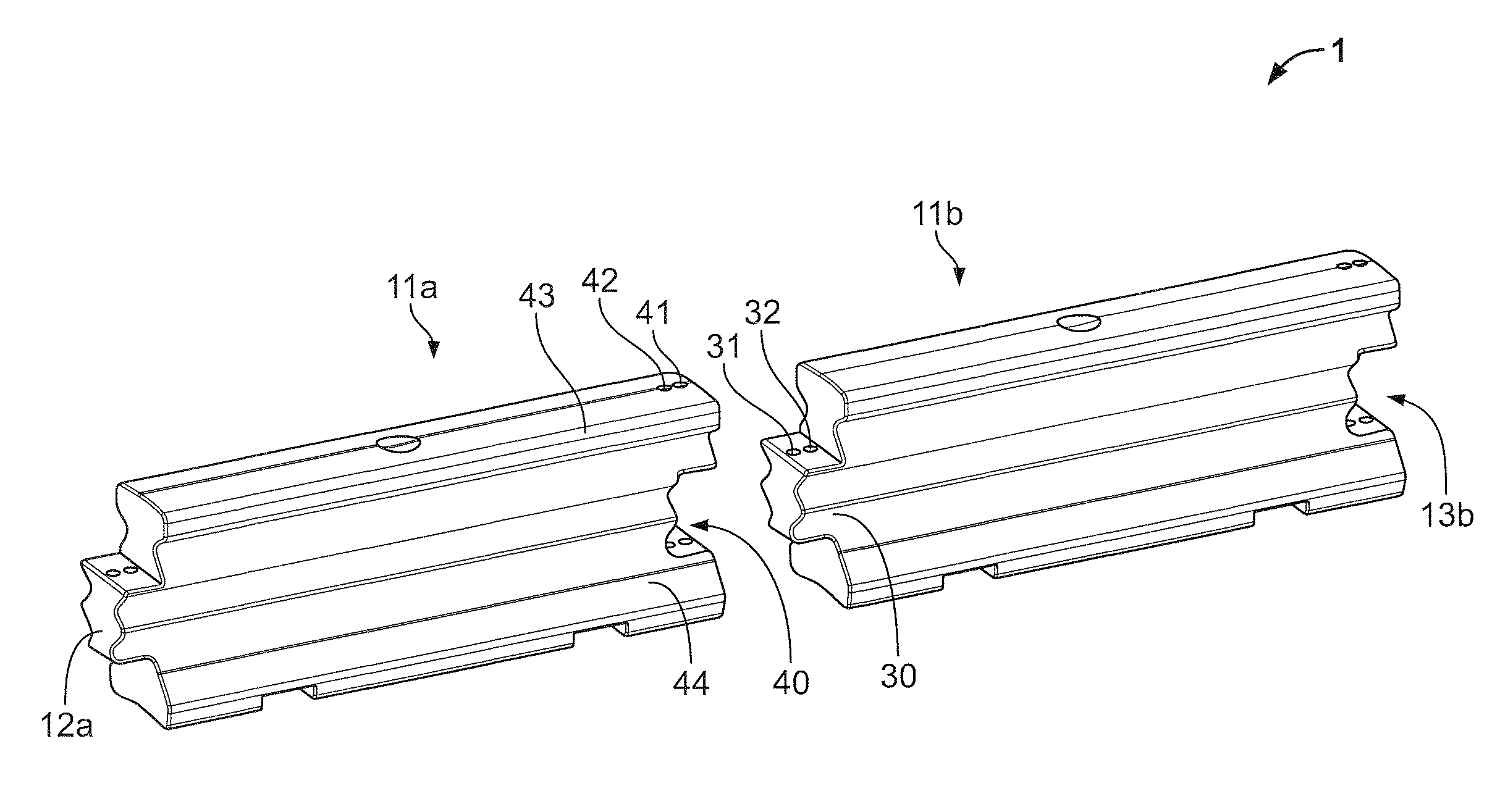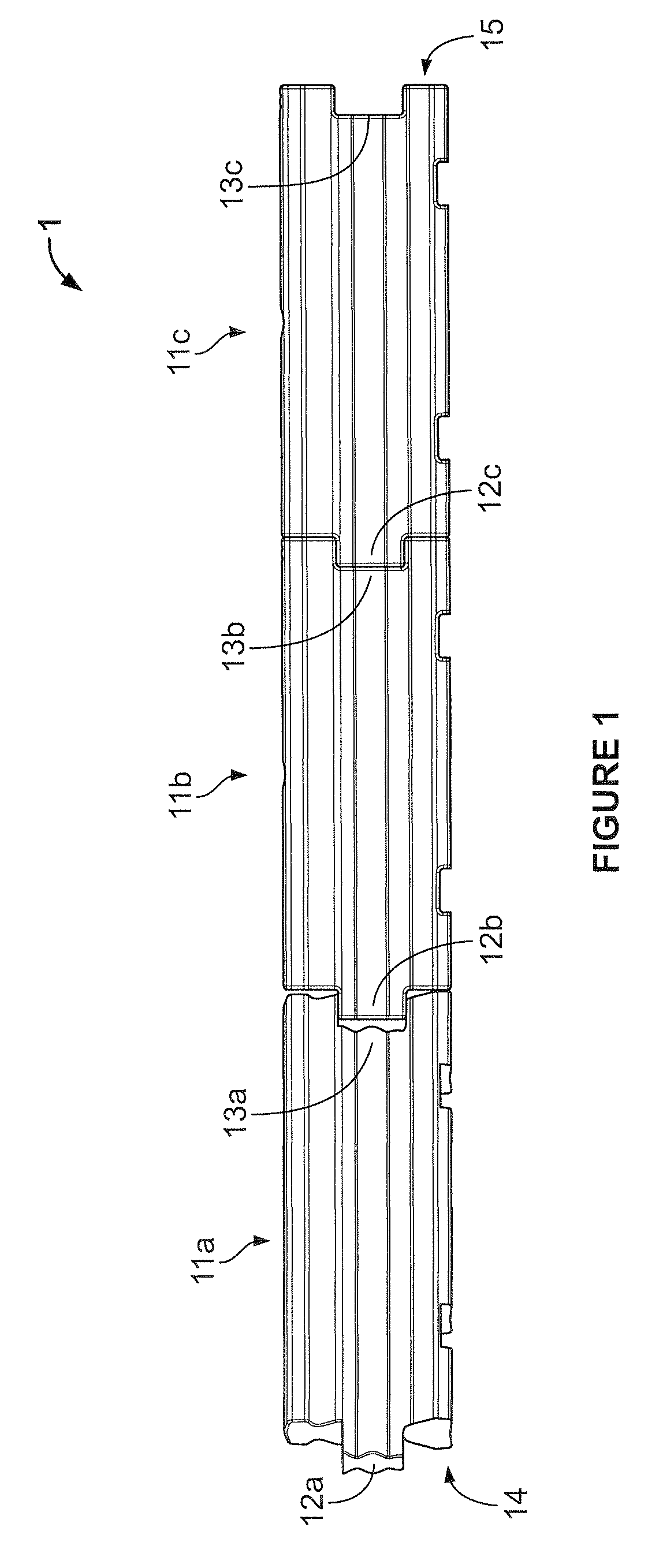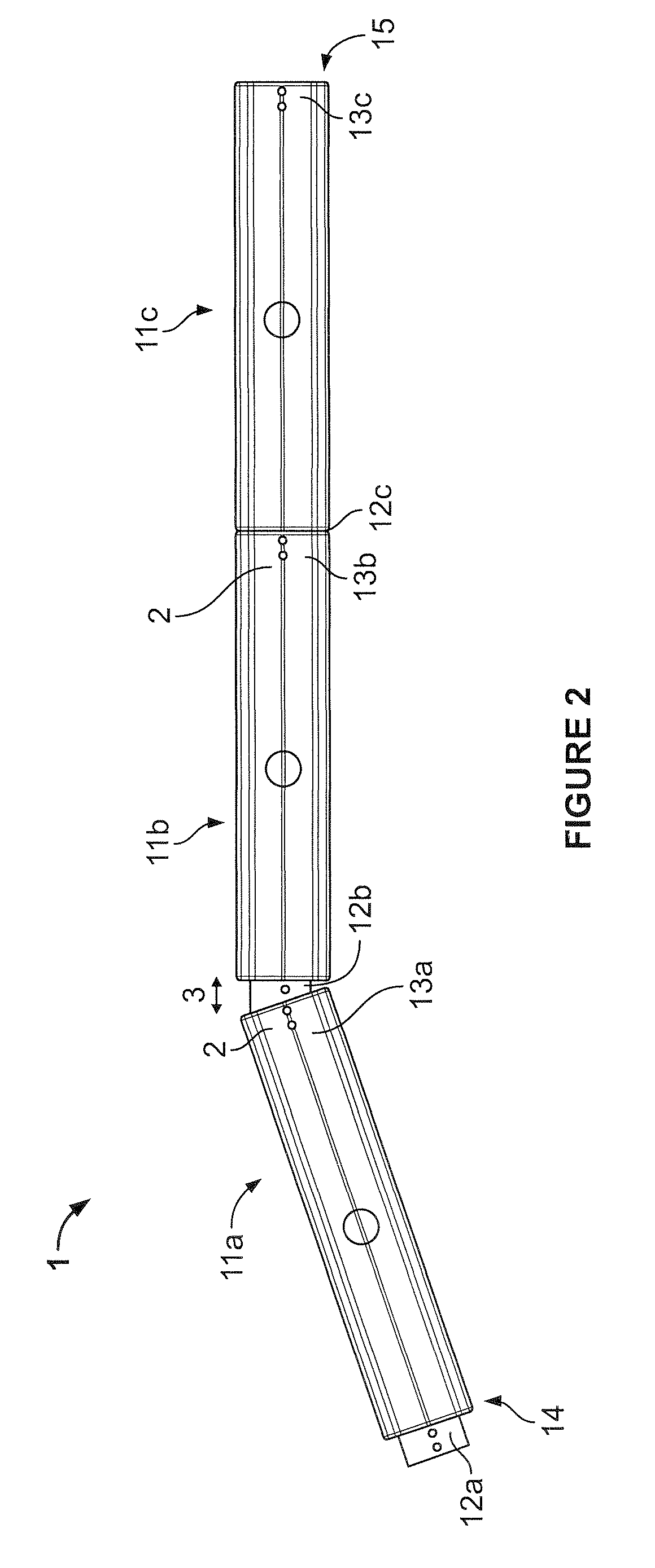Barrier section connection system
a connection system and barrier section technology, applied in the direction of mechanical equipment, basic electric elements, couplings, etc., can solve the problems of uneven terrain, uneven connection, and inability to properly align and connect projections, and offer little structural resistance to impact for
- Summary
- Abstract
- Description
- Claims
- Application Information
AI Technical Summary
Benefits of technology
Problems solved by technology
Method used
Image
Examples
Embodiment Construction
[0083]FIGS. 1, 2 and 9 show a barrier 1. The barrier 1 is constructed from three barrier sections, as indicated by arrows 11a to 11c respectively. In FIG. 2 the two ends of the barrier sections 11a and 11b are orientated in a second position, while two ends of the barrier sections 11b and 11c are orientated in a first position. When the barrier sections are orientated in a first position, (for example, the barrier sections 11b and 11c) the barrier sections are positioned in an in-line position with respect to each other. In comparison, when the barrier sections are orientated in a second position, one barrier section 11a, is positioned in an angled position with respect to the second barrier section 11b.
[0084]FIGS. 3 and 4 respectively show a side view and plan view of a single barrier section 11. As shown, the barrier section 11 has a projection 12 in the form of a single protrusion 30 at one end 14 of the barrier section 11. Additionally, the barrier section 11 has a receiving po...
PUM
 Login to View More
Login to View More Abstract
Description
Claims
Application Information
 Login to View More
Login to View More - R&D
- Intellectual Property
- Life Sciences
- Materials
- Tech Scout
- Unparalleled Data Quality
- Higher Quality Content
- 60% Fewer Hallucinations
Browse by: Latest US Patents, China's latest patents, Technical Efficacy Thesaurus, Application Domain, Technology Topic, Popular Technical Reports.
© 2025 PatSnap. All rights reserved.Legal|Privacy policy|Modern Slavery Act Transparency Statement|Sitemap|About US| Contact US: help@patsnap.com



